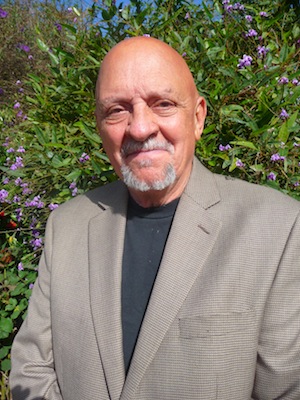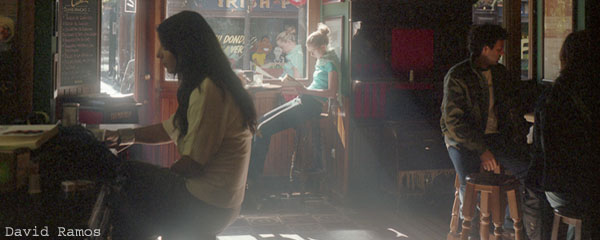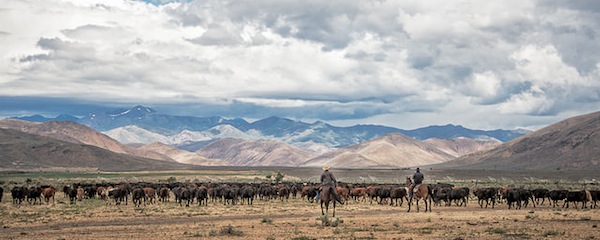
photo by Elizabeth Haslam
by Charles E. May
In the last few years I was teaching the short story, the liveliest and most contentious class discussion I had with my students was about Annie Proulx’s ‘Brokeback Mountain’, because my students wanted to avoid discussing the story itself and talk instead about the social issue of homosexuality.
I know this was partially due to the trend Denis Donoghue lamented a few years ago – that his students did not want to talk about literature, but rather large-scale public themes.
They are happy to denounce imperialism and colonialism rather than read Heart of Darkness, Kim, and A Passage to India in which imperialism and colonialism are held up to complex judgment. They are voluble in giving you their opinions on race and its injustices, but nearly tongue-tied when it is a question of submitting themselves to the languages of The Sound and the Fury, Things Fall Apart, and A Bend in the River.
However, in the case of ‘Brokeback Mountain’, the controversy in my classroom cut deeper than that. I raised the ire of my students when I argued that the story was not about the social issue of homosexuality or gay life, but that it was a love story that just happened to involve two men. My students felt more comfortable with the story if they could slap a label on the characters and place the story within a recognisable social context.
Jack Twist and Ennis del Mar are in their late teens when they are hired to tend sheep above the tree line on Brokeback Mountain, in Wyoming, during the summer of 1963. When the temperature drops in the evening, Ennis wakes Jack up 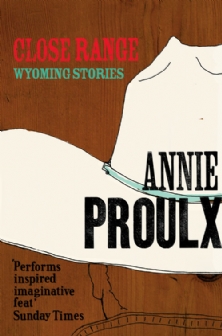 with his teeth chattering, and Jack invites him into his bed-roll. The two men have sex and continue to have sex the rest of the summer, although they never talk about it, except when Ennis declares “I’m not no queer” and Jack agrees, saying it’s a one-shot deal and none of anyone else’s business.
with his teeth chattering, and Jack invites him into his bed-roll. The two men have sex and continue to have sex the rest of the summer, although they never talk about it, except when Ennis declares “I’m not no queer” and Jack agrees, saying it’s a one-shot deal and none of anyone else’s business.
When the two men separate at the end of the summer, Ennis feels so bad he stops on the side of the road and vomits. In December, Ennis marries Alma Beers to whom he has been engaged; she is pregnant by mid-January.
Four years later, Ennis gets a letter from Jack Twist saying he is coming through and wants to buy Ennis a beer. When they meet, they grab each other and kiss on the mouth so hard that they bring blood. By this time Ennis has two daughters and Jack is married with a son. Jack and Ennis go off to a motel, and both men are astonished at the power of their feelings for each other. But both men are frightened about these feelings, realising that they must do something about it, for if they act that way in the wrong place they will be dead.
Jack, who has been a rodeo performer, thinks he and Ennis should get themselves a little ranch and live together, but Ennis says he does not want to be one of those old guys who live together until someone takes a tire iron to them. However, both men realise that their feelings for each other are serious and not merely sexual.
Ennis goes on a fishing trip with Jack once or twice a year, and Ennis and Alma begin to grow apart, for she has seen the two men embrace. She divorces him and Ennis goes back to ranch work. The two men continue to see each other, but they reach a point when Ennis cannot see Jack as much as Jack would like. Jack tells Ennis they could have had a good life together, but all they really have is the memory of Brokeback Mountain. Jack tells Ennis he does not know how to quit him.
Several months later, Ennis sends a postcard to Jack, which is returned, stamped ‘Deceased’. He calls Jack’s wife, Laureen, who tells him it was an accident, that when Jack was pumping up a flat it blew out and knocked the tire rim into his face and he bled to death. Ennis thinks to himself that somebody got him with a tire iron. Laureen tells him that Jack wanted his ashes scattered on Brokeback Mountain, and Ennis goes to Jack’s parents’ house and offers to fulfill that wish. However, the father refuses, saying he is going to bury the ashes in the family plot. The story ends with Ennis dreaming about Jack as he first saw him as a young man on Brokeback Mountain.
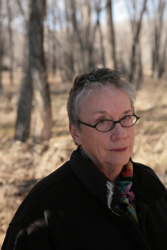 Conventional stories about sexual relations between men are either about men identified as homosexuals or men, such as prisoners, who have no other available partners. However, ‘Brokeback Mountain’ does not fit either one of these categories. Both Ennis and Jack insist that they are not homosexual, and neither of them have sex with other men. Moreover, although they first have sex while alone on the mountain, they continue to have sex over the years even though both get married. The two men seem to genuinely love each other, both craving that time on Brokeback Mountain when their embrace satisfied ‘some shared and sexless hunger’.
Conventional stories about sexual relations between men are either about men identified as homosexuals or men, such as prisoners, who have no other available partners. However, ‘Brokeback Mountain’ does not fit either one of these categories. Both Ennis and Jack insist that they are not homosexual, and neither of them have sex with other men. Moreover, although they first have sex while alone on the mountain, they continue to have sex over the years even though both get married. The two men seem to genuinely love each other, both craving that time on Brokeback Mountain when their embrace satisfied ‘some shared and sexless hunger’.
Annie Proulx takes a creative chance here because many readers, including most of my students, try to simplify the story by classifying Jack and Ennis as homosexuals, or else latent homosexuals (a term that experts are more and more classifying as meaningless), or even bisexual, another meaningless term. But such an easy classification will not serve here. When Jack and Ennis deny their homosexuality, they mean it. The fact of the matter is: Jack and Ennis love each other – with tenderness, passion, and concern – and people who love each other in this way – regardless of their gender – desire to be physically close.
One of the most poignant and revealing moments in the story occurs in May 1983, when, out on the range, the two men hold each other, talk about their children, and have sex. The sexuality is no more important than their domestic conversation; it merely seems a natural part of their love for each other.
This is not to say that the story ignores the social taboos against the relationship the men have. Both of them are scared, for they know – especially in the male-dominated cowboy area in which they live – that if their sexual relationship is discovered they could be killed. Ennis recalls when he was a boy an old man being beaten to death with a tire iron for his homosexuality. He wonders if the feeling they have for each other happens to other people, and Jack says, “It don’t happen in Wyoming.”
However, I see this barrier to their being open about their relationship serves less as a social issue of homosexual intolerance than as a typical literary impediment that gives famous love stories their tragic inevitability, such as the feud between families of Romeo and Juliet. Moreover, at the end of the story when Jack is killed, there is no real evidence that he was murdered by homophobes. Ennis only suspects this when he learns from Jack’s father that he had made plans with 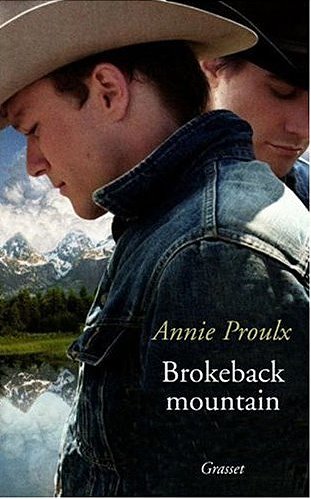 another man to come up and build a place and help run the ranch. The story ends not with a message about the social intolerance of homosexuality, but rather with a poignant image of Ennis creating a simple memorial to Jack – a postcard picture of Brokeback Mountain and two old shirts the men wore when they spent their first summer together.
another man to come up and build a place and help run the ranch. The story ends not with a message about the social intolerance of homosexuality, but rather with a poignant image of Ennis creating a simple memorial to Jack – a postcard picture of Brokeback Mountain and two old shirts the men wore when they spent their first summer together.
The technical challenge Annie Proulx faces in ‘Brokeback Mountain’ is how to write a love story between two men without falling into the clichés and conventions of a homosexual story. Proulx achieves this by creating a fable-like style for the story. She removes the social context and, instead, focuses on the passionate love affair between Jack and Ennis against a stark landscape.
Proulx focuses almost entirely on the encounters between the two men as mysterious, passionate couplings and tender, concerned sharing. The other characters in the story – the wives of both men and the parents of Jack – serve only minor roles. Proulx does not create an explicit social opposition to the relationship, complete with specific enemies who Jack and Ennis must fear. All she need do is suggest, by the fears of the two men, that they live in a homophobic society, in which there is a constant danger of discovery and disaster.
Another challenge Proulx faces in this story is how to handle the descriptions of the sex between the two men, for even though sexual desire is not the sole source of their relationship, it is a passionate and powerful force for them that they do not understand. Proulx treats their first encounter as a natural event, describing the act explicitly and straightforwardly.
“Jesus Christ, quit hammerin and get over here. Bedroll’s big enough,” said Jack in an irritable sleep-clogged voice. It was big enough, warm enough, and in a little while they deepened their intimacy considerably. Ennis ran full throttle on all roads whether fence mending or money spending, and he wanted none of it when Jack seized his left hand and brought it to his erect cock. Ennis jerked his hand away as though he’d touched fire, got to his knees, unbuckled his belt, shoved his pants down, hauled Jack onto all fours and, with the help of the clear slick and a little spit, entered him, nothing he’d done before but no instruction manual needed. They went at it in silence except for a few sharp intakes of breath and Jack’s choked “gun’s goin off,” then out, down, and asleep.
By developing the relationship of the two men over a period of some twenty years, Proulx also suggests that it is not merely sex that holds them together, but something more emotional and lasting. She achieves this by focusing not only on their sexuality but also on the domestic relationship between the two men, and their mutual concern for each other.
By refusing to make judgments and by treating the relationship of the two men with dignity and respect, Proulx succeeds in making the reader believe in this love affair between two men without positioning it narrowly as a homosexual story.
Ang Lee’s film adaptation of Annie Proulx’s story stays faithful to Proulx’s focus on this as a love story in the classic tradition, rather than a social tragedy of homophobia and gay bashing. However, the film ends with more of a suggestion than the story does that Jack has always been gay and that he is killed by homophobes. Whereas the story is about a universal human issue, the film leans towards a social issue that, thankfully, may not be an issue much longer.
Annie Proulx’s story is not about social issues, for falling in love is, by its very nature, the most antisocial and irrational thing one can do, and when people fall in love they do not fall in love with a social category or a type, but rather with an individual. The significance of Annie Proulx’s story is that when people love each other, gender is irrelevant.
~
Charles E. May, Professor Emeritus in California, is the author/editor of Short Story Theories, New Short Story Theories, Reality of Artifice, Flannery O’Connor, Alice Munro, and I Am Your Brother: Short Story Studies. He has published 200 articles on the short story and maintains a blog, ‘Reading the Short Story‘.
~
photo of Annie Proulx © Gus Powell
